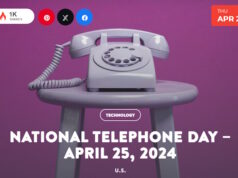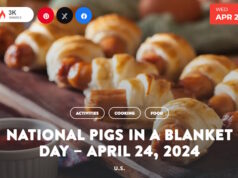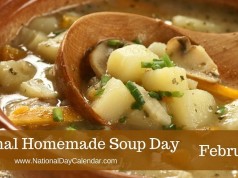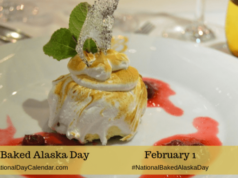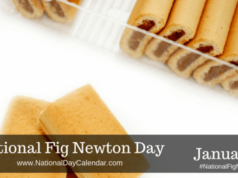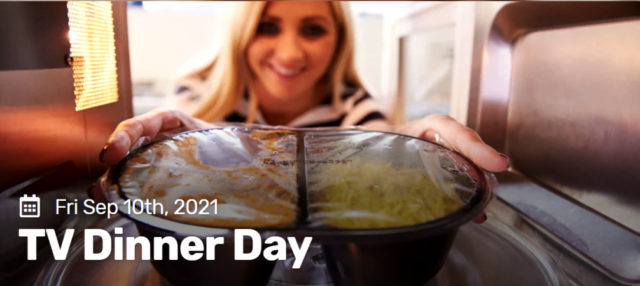
National TV Dinner Day is observed annually on September 10th. In 1953, C.A. Swanson & Sons changed the prepackaged meal business forever. Introducing the TV Dinner revolutionized frozen food.
- Some credit Clarence Birdseye with inventing frozen meals. He developed a system of packing and flash-freezing fresh food back in 1923.
- The TV dinner can actually trace its history to airplanes, and a company called Maxson Food Systems that began manufacturing frozen meals that could be reheated in the sky in 1945, according to the Library of Congress. These “Strato-Plates” featured three compartments (for meat, a vegetable, and potato), and they were incredibly easy to heat and serve
- By 1949, Albert and Meyer Bernstein were selling frozen dinners on compartmentalized aluminum trays in the Pittsburgh area.
- They sold them under the One-Eyed Eskimo label, and only to markets in the Pittsburgh area. By 1950, the company had produced over 400,000 frozen dinners.
- Demand continued to grow, and in 1952 the Bernstein brothers formed the Quaker State Food Corporation. They expanded distribution to markets east of the Mississippi. By 1954, Quaker State Foods had produced and sold over 2,500,000 frozen dinners!
- In 1954 C.A. Swanson & Sons introduced the first TV dinner. It was Swanson’s massive 1954 advertising campaign that sealed the deal on TV dinners for consumers.
- The first Swanson TV Dinner consisted of a Thanksgiving meal of turkey, cornbread dressing, peas, and sweet potatoes. Originally, Swansons made the tray of aluminum. They separated each food item into individual compartments, too.
- When Swanson’s first sold TV dinners, they priced them at 98 cents.
- The first TV dinners produced by Swanson were in answer to a problem they had with Thanksgiving turkey leftovers. Not just a few Tupperware containers, either — we’re talking about 260 tons (235 metric tons) of turkey leftovers.
- At home, the cook heated the dinner in the oven. The cooking time was usually 25 minutes. Today, nearly all frozen food trays can be cooked in the microwave or a conventional oven.
- The term ‘TV Dinner’ came about for a myriad of reasons, including that these dinners came in trays that both resembled the TV’s of the era, and that the boxes contained an image of a TV on the cover.
- Most compelling, perhaps, is the fact that these dinners would fit perfectly on a TV Tray, which tied in nicely with consuming these while enjoying one of America’s favorite past-times, watching TV.
- In the first year, production estimates reached 5,000 dinners. To their surprise, Swanson far exceeded that amount. In the first year, they sold more than 10 million of them.
- 1960 – Swanson added desserts to a new four-compartment tray.
- In 1962, Swanson stopped using the name TV Dinner. However, in the United States, the term remains synonymous with any prepackaged dinner purchased frozen from a store and heated at home.
- 1964 – Night Hawk name originated from the Night Hawk steak houses that operated in Austin, Texas, from 1939 through 1994. The original diners were open all night, catering to the late-night crowd. The restaurants produced the first frozen Night Hawk TV dinner in 1964.
- 1969 – The first TV breakfasts were marketed. Great Starts Breakfasts and breakfast sandwiches followed later.
- 1973 – Swanson markets the first Hungry-Man dinners. The meals included larger portions of its regular dinner products.
- “Mean” Joe Greene was Hungry-Man’s first spokesman.
- 1986 – Microwave-oven safe trays debut on the market.
- 1986 – The Smithsonian Institute inducted the original Swanson TV Dinner tray into the Museum of American History.
- “TV Dinner” is a trademarked term that’s been “genericized” over the years. Even though the term was originally a brand name for Swanson’s frozen dinners, it’s become synonymous with any supermarket-bought packaged frozen dinner.
Sources:



